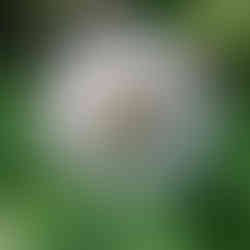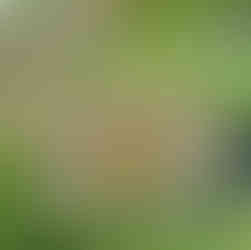Weeds or wildflowers?
- Clare
- Apr 26, 2020
- 6 min read
We have had another week of glorious weather and I have grabbed every opportunity to be out in the garden. There is (as always) much to be done. I am trying to adopt a more systematic approach to weeding this year, tackling one border at a time, but everywhere seems to be out of control already. A weed is just a "flower growing out of place" of course and there are many that I am in no hurry to remove; daisies and celandines being a prime example of these as they bring colour and nectar to the garden before the surge of spring and summer flowers appear. Our borders and river bank are also carpeted with forget-me-nots at the moment, which form a lovely backdrop to some of our other spring flowers. I will leave them for the moment, though tend to remove them when they start to die back (they always return with vigour the following year!).

Whilst I know many would shake their heads disdainfully at the mere thought, I also allow Pentaglottis sempervirens (green alkanet) to grow unperturbed in some areas as the bees love it and leave small patches of Veronica persica (birdeye speedwell) as an edging to some of my borders, though this roots very easily and will spread to the lawn if not kept under control. Speedwell's name literally means "speed thee well" or "safe journey". It is often seen on roadsides and is mentioned commonly in poetry and literature, for example "Another Spring Carol" by Alfred Austin:
See! light is gleaming
In primrose brakes,
And out of its dreaming
The speedwell wakes,
And the tender tips of the timid clover
Peep forth to see if the frost be over.
One of my favourite weeds or wildflowers (depending on your point of view) is Cow Parsley and I love to see it growing on the roadside during late Spring and early Summer. It is a member of the carrot family and a great source of nectar for hover flies and orange tipped butterflies. I am particularly fond of it as my nan used to love it and it reminds me of her. She told me several times that her nickname as a child was "Kecky" as she used to love it so much ("kek" is an old country name for Cow Parsley. It's perhaps not as pretty as "Queen Anne's Lace" which is another name the plant commonly goes by, but I rather like it).
Our lilacs are also flowering and sprouting prolifically along the river bank. They are incredibly resilient, free growing plants and I find I have to cut the young shoots back quite heavily each year to stop them completely taking over. Their scent is lovely however and, at certain times of day, seems to fill the garden.
Other plants have completed their flowering and are already turning to seed. The Honesty is starting to form its characteristic, translucent seed heads and my hellebores are also forming little packages of seed. I have collected some in the hope that I can propagate these in pots and will leave others to self seed where they grow. Other seed heads almost seem more impressive than the flowers they have replaced:
In our meagre vegetable patch, the potato leaves have finally appeared and, at the allotment, the children were happy to see white flowers promising lots of lovely strawberries in a few months' time.
The duck family are still visiting us daily, though sadly the ducklings are now down to ten.

Despite the sunshine, it has seemed extra hard to encourage the children outside this week. They are less enthused by the good weather, though have enjoyed brief spells making dens and reading and painting in the shade. It can be difficult to find the right balance and, whilst I am loving having them at home, there are moments of worry and frustration as we try to make the best out of a difficult situation!
I have included a few more suggestions for nature based activities to keep the young ones amused:
1. Ink blot butterfly picture - Sometimes the simplest of activities are the best and this is a great way to introduce the concept of symmetry and pattern making at an early age. Add blobs of paint to one side of a piece of card or paper, then fold the paper (with the painted surface inside) and press down. A symmetrical copy of the blotted image will appear on the unpainted side of the paper. This can be cut into a butterfly shape and antennae or bodies added if required.
2. Learn about senses in the garden - We tried this exercise recently and it worked reasonably well with both children. After introducing the concept of the 5 basic senses - sight, smell, taste, touch and hearing - we went out into the garden to explore them further using a few simple activities.
Sight - observation exercise - choose one or two sites in the garden and spend 10 minutes noting the birds and/or insects that you see in that area. Try to identify what you see and note what are they doing (e.g. feeding, flying, singing, grooming, sleeping, etc)? We also talked about the differences between birds (such as colour, size, beak shape) and how these features correspond to different feeding patterns and behaviours.
You could also discuss colour in the garden and younger children could be encouraged to find all the colours of the rainbow.
Hearing - (i) Describe what you see in the garden and then close your eyes and describe what you hear. Do you notice things that you hadn't noticed before?
(ii) Guide a blindfolded person around a simple obstacle course using instructions such as "Stop", "Go", "Crawl", etc. Take it in turns to be guided and give instructions.
(ii) A person sits in the middle of the garden with their eyes closed. Someone else stands at various points around the garden and makes a noise. The blindfolded person has to determine where they are by sound alone.
Touch and smell - Identify a selection of garden objects (such as leaves, flowers, herbs, stones, bark, etc) using touch and smell. Can you identify different trees by the texture of their bark or the shape of their leaves?
Taste - We could have collected some edible plants from our garden for a taste session, but decided to have a break and taste an ice cream instead!
3. Beetle game - This is another old game that I had forgotten about until recently. To start, the constituent body parts of a beetle are designated a different number on a die. For example:

6 for the body
5 for the head
4 for each of the wings (2 in total)
3 for each of the legs (6 in total)
2 for each of the antenna (2 in total)
1 for each of the eyes (2 in total)
The players take it in turns to roll the die and draw the body part that corresponds to the number thrown. The winner is the first person to complete the whole beetle.
NB To make matters a little more complicated, the parts must be drawn in a particular order, i.e. the body must be drawn first and the antenna and eyes cannot be dawn until the head is present.
4. Do a leaf rubbing - Collect a variety of leaves from around the garden. Place the leaf under a piece of paper (with the veins most prominent on the uppermost surface) and place a piece of paper on top. Lightly rub the side of the crayon against the paper to copy the pattern of the leaf. Repeat with different leaves and colours of crayon to make a picture.

This activity could be varied by trying bark rubbings directly on trees. If its wet outside, you could also use play dough or clay to make imprints of leaf patterns.
5. Make a floral soup or a mud pie! - Both children loved making "soup" or "potions" when they were younger. Leaves, flower heads (picked with permission of course!) and quantities of mud would be added to buckets of water and then served in little teacups and bowls. This is actually a good way to teach some simple plant names as, for example, we would go round the garden collecting herbs for the soup!



























Comments